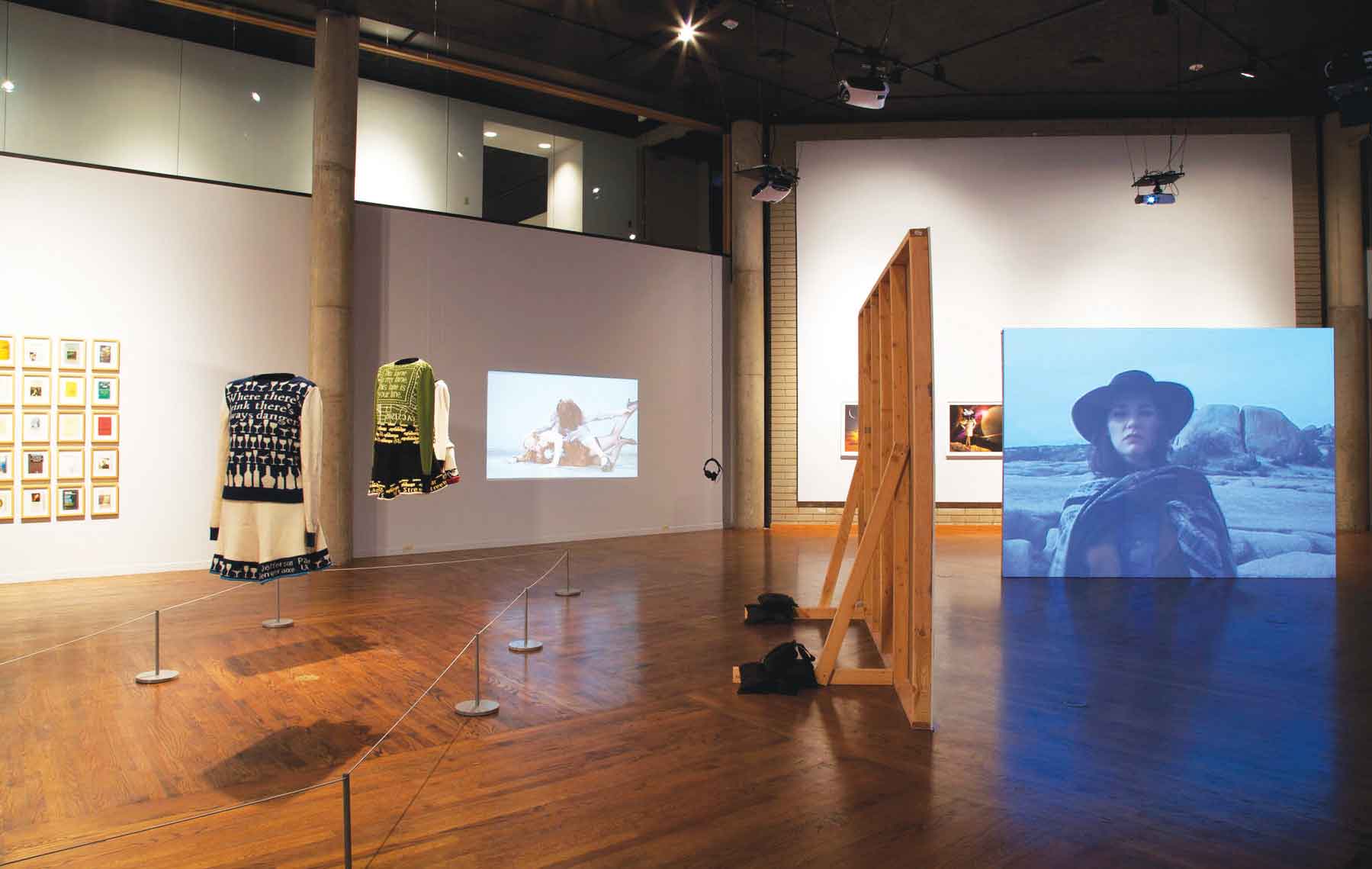« Reviews
Doublespeak
Salt Lake Art Center - Utah
Curated by Micol Hebron
By Cara Despain
Using the shrewdly crafted writing of Hồ Xuân Hương, a revered 19th-century Vietnamese poetess, as a springboard, “Doublespeak” aims to examine female contemporary artists through tropes used historically by women to communicate: double entendre, coding and metaphor. In patriarchal/oppressive societies, women used such means to convey politically risky, sexual, potent or secret messages. “Doublespeak” thematically draws a comparison to this by revealing a similar mode of expression within contemporary art. By doing this, it also views the all-female grouping-Jennifer Nelson, Daniela Comani, Lisa Anne Auerbach, Rebecca Campbell, Juile Orser, Carlee Fernández, Julie Lequin, Carlin Wing, Wendy Red Star, Mary Reid Kelley, Barbara Kruger and The Fourth Height+Urs Bigler-through the lens of feminist art both past and present.
The artists in this exhibition share some common threads that tie them into the context of the show as a whole and invoke previous feminist approaches to art making. The overall tone of “Doublespeak” is frank, and the initial message of many of the works is fairly clear and overt. They transpose, subvert, reverse and rewrite the more visible male history using direct language, posed imagery and reversed identities in an array of media. It is the secondary message embedded within some of these works that reveals a deftly layered, more subtle route to an alternative or reinforced conclusion. This is a message viewers have to listen closer to hear, and it is what sets the works apart from being merely formulaic.
Julie Orser’s video pieces in the exhibition, Bottleneck and Occurrence at Lookout Rock, are acutely aware of filmic history and devices, and reference character stereotypes and landscape imagery in old westerns-a typically male, typically violent genre. Bottleneck restages a “catfight” scene between two female characters from the film Destry Rides Again, but without the male influence and behavior save the original sound. In the film, the fight is broken up by a male bartender, who drenches the two women with a bucket of water as an all-male audience hoots and hollers (which seems to enable and escalate the skirmish). In Orser’s work, they fight in isolation with only props and white walls and are drenched by water pouring on them from nowhere. This exalts the fight to a sort of hyper-female alternative to the male-influenced “catfight” (a gendered term that makes a female fight into both male fantasy and female hysteria) and simultaneously perpetuates it by forcing the viewer to be the voyeur. Ironically, if the filmic reference is lost on them, the viewer is merely watching a sexy, soggy wrestling match and misses the very pointed flipped message.
Like many other works in the show (as those by Fernández, The Fourth Height and Comani), Occurrence at Lookout Rock swaps male characters for female counterparts and, as in Bottlneck, Orser removes the male actions in addition to the males themselves. The four-channel installation creates a panoramic setting for a desert standoff with projection, again with the viewer as integral part. The Outlaw, Saloon Girl, Cowgirl and The Lady enter and walk to their respective screens. They face off with no guns, culminating in a drawn out, anti-climatic end where the expected violent shootout (stereotypical male action and weapon) is replaced with the woman’s art-historical munition: the female gaze.
Perhaps the most directly pertinent to Hebron’s poetic inspiration for the show are 2011 Rome Prize recipient Mary Reid Kelley’s video pieces Queens English; Sadie, The Saddest Sadist; and You Make Me Iliad. Kelley draws upon linguistic devices, wartime poetry and visual language to create immensely smart, crafty works that turn language over and over - synthesizing several meanings into one verse while simultaneously weaving existing histories with new ones from a female vantage point. The graphic, black and white staging and costuming for the videos puts them in a context of drawings, propagandist posters and war milieu and visually sets the tone of the setting for the storm of clever word plays of virtually every assortment she has constructed using reference texts and her clear proclivity for language. Kelley herself plays many of the roles, both male and female, confusing and playing on gender and creating a first-person narrative from multiple characters. This is doublespeak in the most relevant way, linking historical events with linguistics, culture and art history almost theatrically, with the allusions within each separate history coalescing at the point of female perspective.
Not all of the pieces in “Doublespeak” are this nuanced and in-depth in their double entendres, but the collection is effective in presenting strong work that represents a strictly female perspective addressing issues that have been historically taboo. That there is thematically a dialogue about both repression and blatant freedom of expression (the existence of the exhibition itself) creates a dichotomy on its own.
(October 7, 2011-January 2, 2012.)
Cara Despain is an artist, arts writer and curator. She is a faculty member at the Visual Art Institute (VAI) in Salt Lake City.
Filed Under: Reviews



































